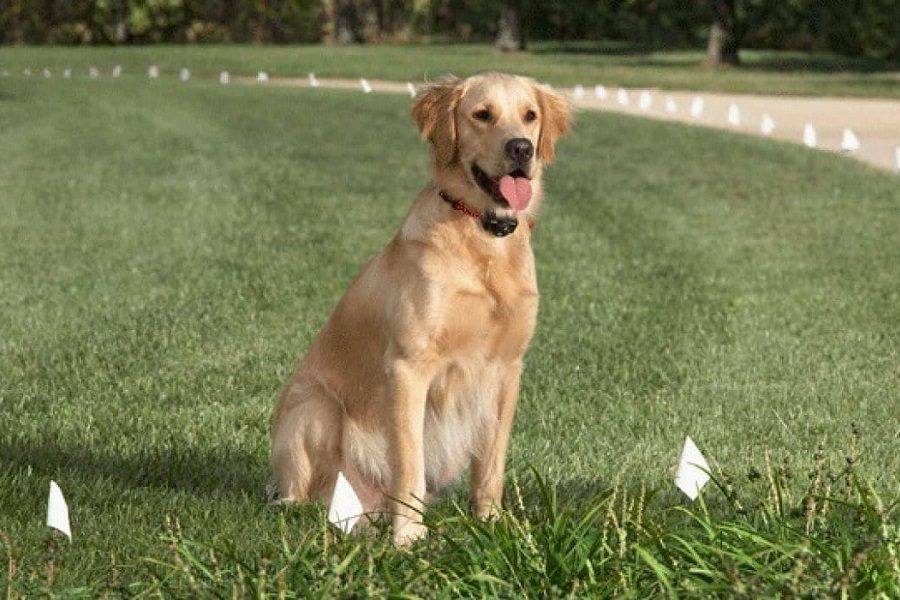Last Updated: 7 months ago
As a dog owner, it’s likely that you’ve come across CBD oil for dogs products at least once or twice over the past few years. Since the 2018 Federal Farm Bill amendments gave the go-ahead for hemp production and sales, CBD has become a normal sight in pet stores, dog parks, and online.
The most common forms of CBD for dogs are treats and oils. Treats are handy, as they come pre-infused with the cannabis derivative. Oils, on the other hand, can be used as an oral and topical treatment, as well as allowing owners to tightly control their dog’s dose.
If you’re thinking of seeing what all the CBD fuss is about, you’re certainly not alone! But like any supplement or treatment, CBD shouldn’t be taken by dogs who don’t actually need it. Here’s a look at the basics of CBD for dogs.
How CBD Oil Works For Dogs
CBD is an anti-inflammatory and anxiolytic (anxiety-reducer). When a dog takes CBD, the cannabinoid binds to receptors called CB1 and CB2, which are part of the body’s endocannabinoid system. This system, usually abbreviated to the ECS, plays a major role in maintaining homeostasis—the scientific term for how our bodies cope with changes and pressures in the external environment. This makes the ECS closely related to the immune response and inflammatory flare-ups.
A well-functioning ECS means dogs are better able to manage their inflammatory and immune responses. Research has shown that CBD can ‘hijack’ the ECS and increase its efficacy. Because of this, CBD is best suited to dogs with symptoms and conditions that are inflammatory in some form or another. Common canine conditions related to inflammation include:
- Joint pain and arthritis,
- Skin irritations and (non-anaphylactic) allergic reactions,
- Anxiety and neuroinflammatory disorders,
- Nausea, GI irritation, and stomach upset
- Injuries and post-surgery recovery, and
- Inflammatory diseases, including certain cancers,
- If your dog is experiencing any of these or other inflammatory conditions, then CBD is definitely worth a try. But if you’re reading this, chances are you already knew that. The next most relevant questions are how much CBD your dog should have, how often they should take it, and what signs owners should be looking for to tell that CBD might be working.
Dosing
- Because it’s still not FDA-regulated, there is no standard CBD dose. Instead, owners rely on the recommendations of manufacturers and industry experts, as well as their own cautious experimentation. It’s recommended that you start your dog on a once-daily dose of 0.2 milligrammes of CBD per kilogramme of their body weight.
- Once your pup becomes accustomed to CBD, feel free to raise the dosage within reasonable limits. CBD has a super high toxicity (around three hundred times the dose I just recommended), so there is some degree of flexibility involved.
- Depending on their dog’s tolerance, some owners even opt for a twice-daily dose, but it’s important to apply some common sense in relating dosage to need. While a dog with cancer or frequent seizures may require daily CBD supplementation, a dog that takes CBD for one-off purposes such as fireworks or a long car journey is not going to benefit from long-term usage.
- Dogs have faster metabolisms than us, hence the concept of dog years. This means that they’re likely to process CBD more quickly than us. While the data on the half-life of CBD in dogs is thin on the ground, we think CBD will have fully left a dog’s system after a 24-hour cycle.
- A study from Israel found a half-life of nine hours when dogs were given CBD given through an IV drip, while another puts the number at just over four hours. Importantly, CBD’s effect on the ECS can persist even after cannabinoids have left the body.
What to Expect?
- Before you begin, make sure you purchase from a reputable CBD oil for dogs brand that has been independently lab tested. Once you begin a course of CBD with your dog, expect the results to be subtle, if visible at all.
- One of the best ways to track any improvements is by keeping a symptom diary. Using video or notes, simply record how your dog behaves around triggers—how they get up and lie down if they suffer from joint pain, how they respond to loud noises if they have a phobia, etc.
- After a week of more CBD supplementation, go back to the first days of your diary and compare your dog’s health with the most recent entries.
- To add more substantial data to the process (and reduce the risk of the carer placebo effect), you could ask your vet to give your dog before-and-after baseline tests to see how CBD has affected their health.
- As far as your dog is concerned, none of this stuff about dosages and half-lives is likely to make much difference. CBD is non-psychoactive, meaning that your dog cannot get high on CBD oil, no matter how they ingest it or how much they take. While anecdotal reports suggest that some dogs may experience a mild sense of relaxation or increased sleepiness, others report no visible changes in their dog’s behaviour.
- So when it comes to expectations for CBD and your dog, it’s best to play it cautiously and not anticipate any sort of miracle cure. That said, many dogs with inflammatory disorders stand to significantly benefit from CBD supplementation, even if they’re not consciously aware of how it works.



